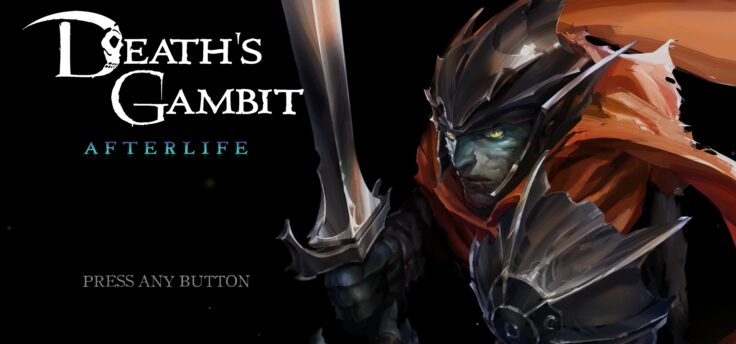Death’s Gambit reborn as Metroidvania
Type: Single-player
Genre: Metroidvania
Developer: White Rabbit
Publisher: Serenity Forge
Release date: 30 Sep, 2021


Remake Rather than Expansion
Looking at the past review of the original Death’s Gambit (I fully recommend reading it for reference), it did seem like a completely different game. Despite the lighter attempts to add some Metroidvania DNA into it, most of its fell on the shallow side, turning it into more of a 2D Action Platformer rather than what was intended. The developer took 2 years to listen to the community and with the Afterlife Version, it’s time to show the fruits of their labor of passion because it’s a full-fledged free update with a vast amount of changes and additions.
This leads us to today’s question. Is it a better game than it once was?
The Story
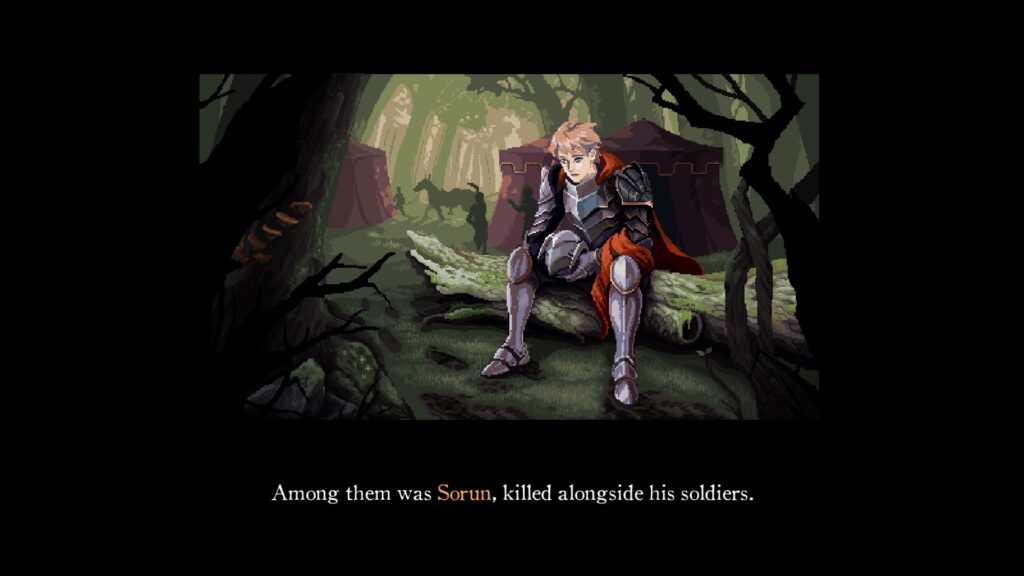
The protagonist Sorun is sent on an expedition towards Aldwynn. A country that contains the secret to immortality and as everyone else before him he and his company died. Against all expectations, it wasn’t his end but a new beginning as he strikes a deal with Death to find the source of immortality and destroy it.
By taking this deal, he goes on a quest to not only fulfill his end of the bargain but to also find his missing mother, who went onto a prior expedition.
From what I’ve experienced, I couldn’t find any big jumble of story parts that are out of order. Perhaps part of the Map revamps also dealt with those issues. It’s a seemingly simple story that maybe bears something more underneath its surface. You can see it’s inspired by the Souls games when it comes to storytelling because you don’t get huge expositions but you get small chunks of story bits instead that let the player piece together the full picture.
There’s a little bit of humor mixed in that strongly contrasts the morbid and harrowing atmosphere full of corpses and blood. I’d say it clashes a bit with the dark tone though the levity is welcomed.
There’s another little notable thing about the story. Unlike Souls games or Nioh, the characters do react to Sorun returning from the dead, which results in some nice banter.
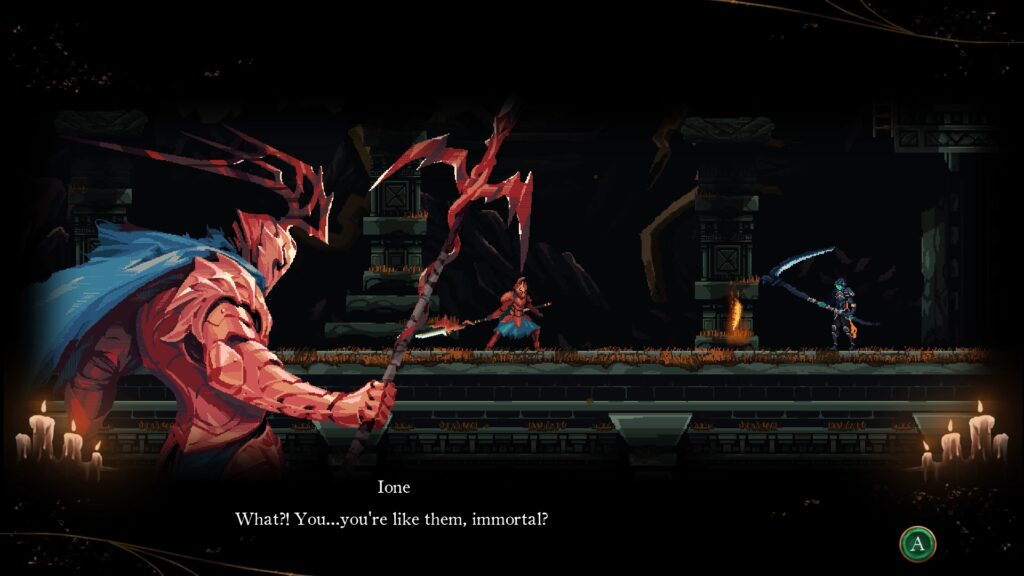
Overall, its story seems a little bit more complex compared to classics like Castlevania or Metroid, which is welcomed for players who want a little bit more than your usual fare.
The Gameplay
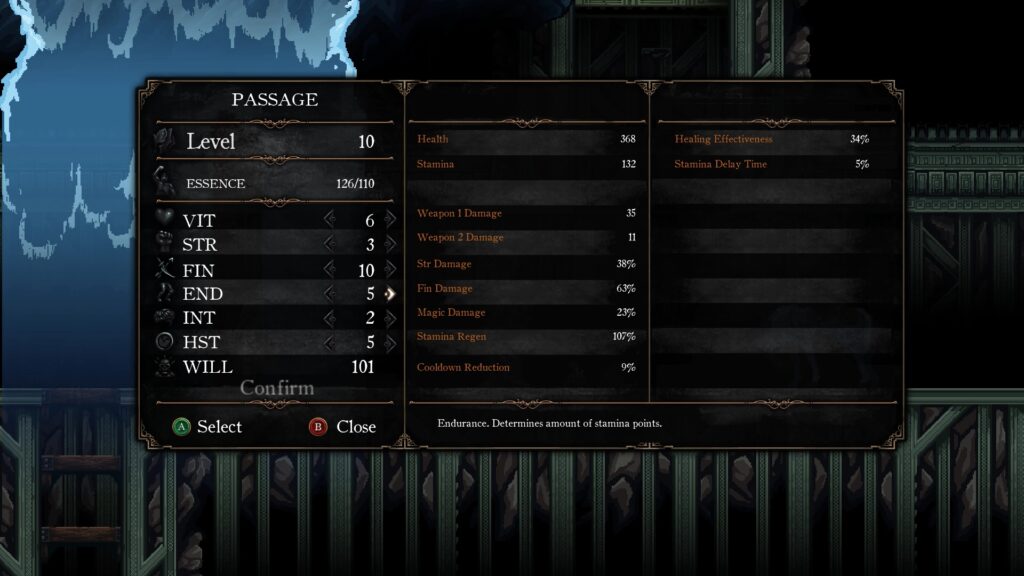
It finds some inspiration in Souls games and their mechanics such as the level-up system but puts its own spin on it. Rather than punishing you with losing all your money, you lose one of your recovery items instead (equivalent to estus flask) that you can pick up at where you died. If you’re not sure where it is then you can spend some money to reclaim it.
But more about the Afterlife things. As mentioned before in the beginning, this isn’t just a simple expansion but nothing short of a new game that’s presented with Afterlife.
Since I couldn’t find a good listing of changes, here’s the one from Fextralife one of the primary sources for souls-like games.
Changes to systems and mechanics have been made to the existing Death’s Gambit:
– Class Selection: Players can now test weapons and classes before committing
– Input Buffering: Players can now change directions during an action even once the animation has started.
– Cooldown: If abilities are interrupted without performing the ability, they no longer go on cooldown.
– Stats: Endurance and Haste (END/ HST) are capped at 30, but each point increases damage, stamina, and cooldown reduction.
– Healing: Healing animation is sped up, but heals less.
Quality of Life changes:
– Shop: Players can now buy stacks in bulk of a singular item in one go.
– Players can now Scrap and Disenchant at a save point.
– Inventory can now be sorted.
– Soul Stones can be more easily obtained.
Afterlife Expansion features all additional content released to date, as well as brand new content:
– 10 new levels expand the world making it one of the largest Metroidvania worlds out there.
– Metroidvania upgrades introduce a whole new way to explore and re-explore the world with new areas and secrets to find.
– 6 new bosses test your mettle.
– Revamped old levels and gameplay systems
– Wield 22 new weapons, each with a game play changing effect.
– Customize your playstyle with over 100 talents, multi-classing, and advanced talents.
– The expansion continues the story past its current conclusion, with climactic alternate endings.
– An in-game map now tracks your progress and helps guide players from getting too lost.
– Multiple new Endings
– Crafting
– NG+ changes
And much much more!
Here’s a link to the official video overview
Map and UI
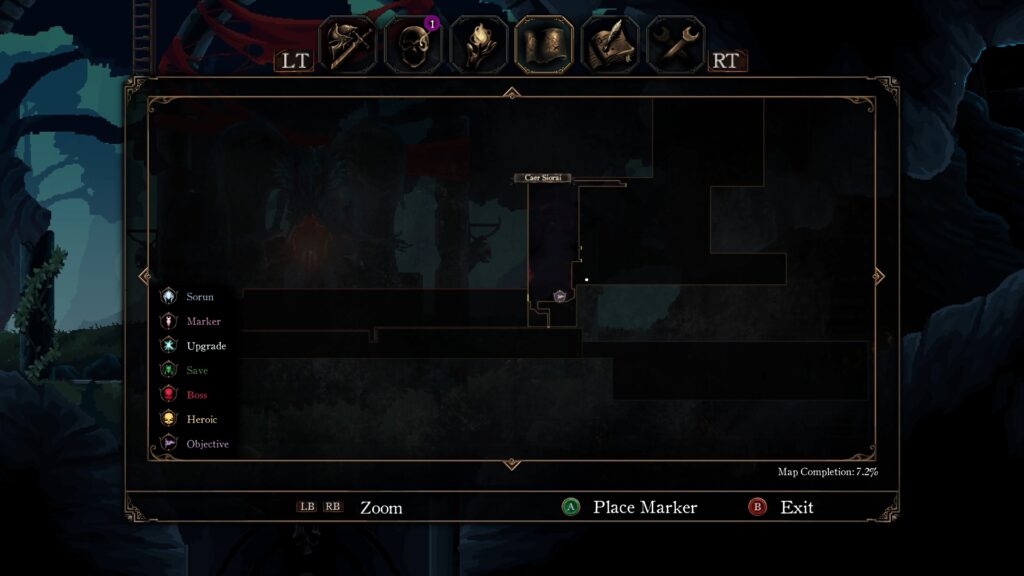
It was shocking to read that the original version didn’t have a map. This was rectified in Afterlife and comes with nifty things like personal markers and special markings such as next target and save spots. It’s not perfect though as you’ll have to mark down progress barriers on your own and it’d still be difficult to distinguish which specific one it is.
Another thing that was rectified is the UI. There are now comparisons between equipment that’ll make your life much easier.
Revamped Map
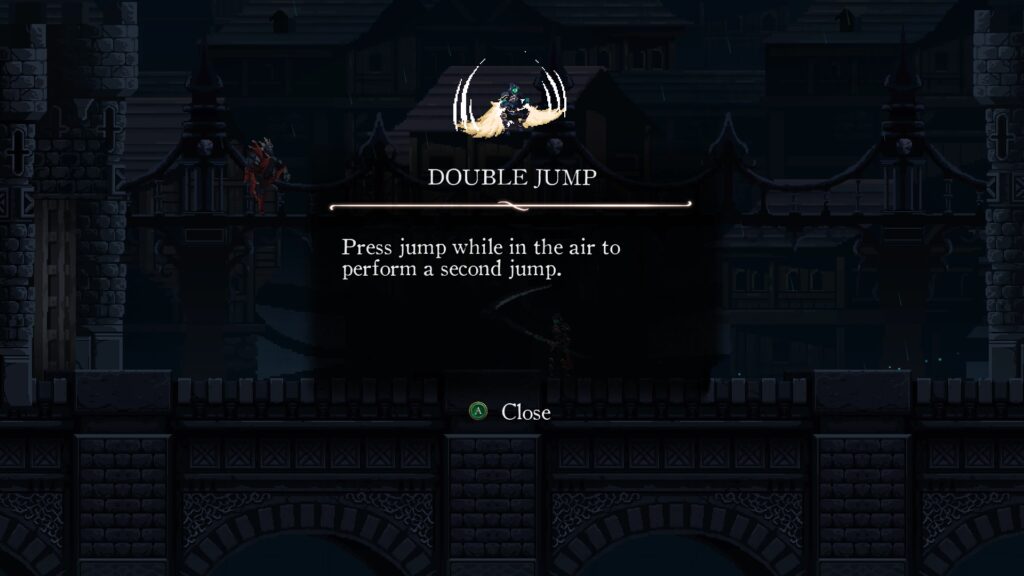
This isn’t a small thing because it has indeed become a Metroidvania game that uses an interconnected world full of shortcuts and progress blockers that require specific skills to gain access. Along with it, the encounter designs are also reworked and I didn’t experience any “attack across wall” situations.
The map is also humongous and claims to be the biggest one in the Metroidvania genre, which is most likely true. But not everything about it is positive.
By having an increased size, it also becomes much more of a hassle to traverse it, especially because of the backtracking. There’s a Fast Travel option but you, unfortunately, get it closer to the end. I think this is going to be one of the biggest choke points when it comes to whether you’re going to enjoy the game or not. Those who don’t like long stretches of backtracking to find the next area will most likely quit their experience amid this task.
There are stretches where you can fast lane your travel by riding the horse but it lacks versatility because it doesn’t cover the vertical space.
As for platforming, there’s some and fortunately nothing too annoying. There’s still a heavy emphasis on combat.
Weapons
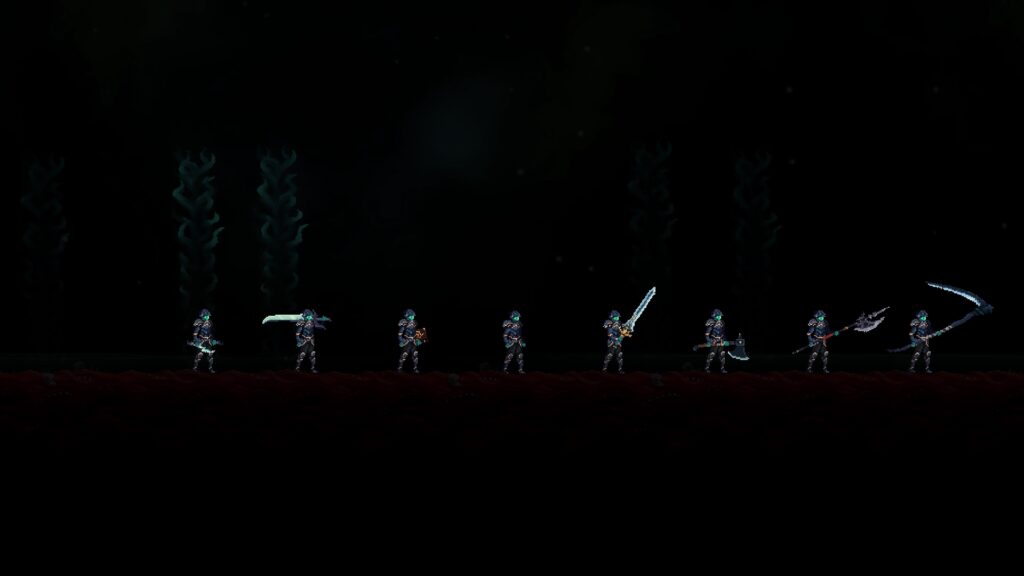
In terms of function, there are only 11 weapons categories but there are unique versions with special effects to augment specific playstyles. They don’t change the attacks but there are some neat ones among them. You can also equip up to 2 weapons and one shield.
You can find weapons through enemy drops or special ones at specific places or bosses. Got dupes? Scrap them and get Soul Stones that are used for upgrading equipment and weapons.
Each upgrade becomes progressively more expensive and they are per weapon. Can’t say I’m too exhilarated about this because you’re “wasting” Soul Stones on basic weapons until you get the special ones. This in turn makes the latter less attractive until bring them up to snuff.
As always, the bigger the weapon the slower the attacks. If you want speedy attacks go for the daggers that scale with the finesse stat. If you want some range on top of it, then it’s best to decide on either a bow, tome, or a gun. Bows scale with the finesse stat that is best suited as a side weapon for things such as daggers and scythes.
Big weapons that scale with strengths might want to opt for the guns that don’t scale with any stat. Both ranged attacks require ammo that replenishes at save points or a specific talent that you can unlock.
Tomes turn the game into a little bit of a 2D shooter but that’d mean the loss of strong close-ranged attacks because none of them scale with the intelligence stat. Not anymore. There are new swords that scale with it.
The new weapons are a welcome addition but it still seems a little bit too overcomplicated as you still have to find and upgrade them on top of the item management clutter.
Talents
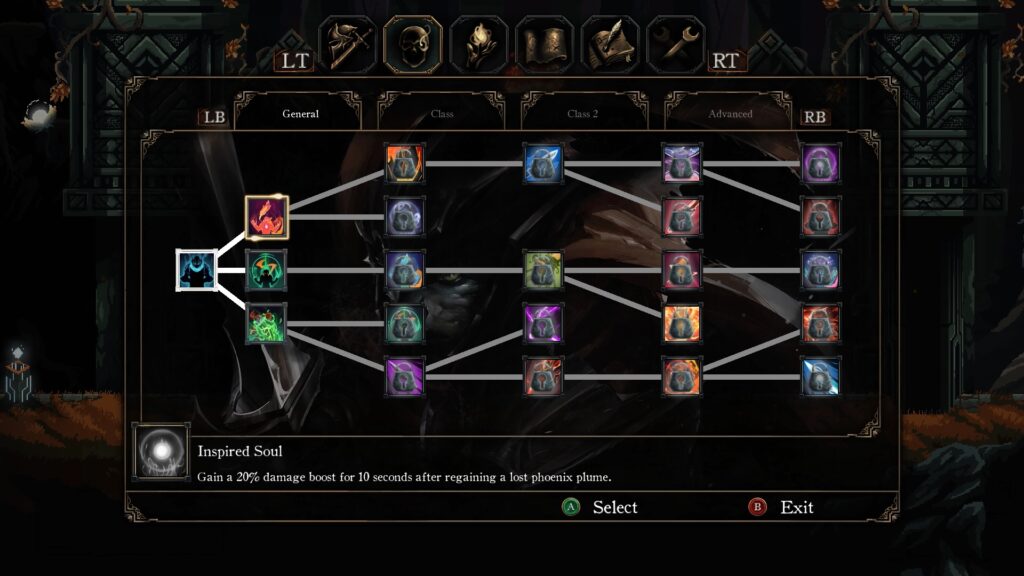
You start with one class and add another one at a later point adding more options in your combat approach. Though there are some limitations on what you want to mix and match because some of them are tied to specific weapons.
Choose one with different stat scaling and you will have to sacrifice damage with versatility though it’s most likely not worth it. Talent points are mostly gotten through defeating bosses so you’ll have to go for NG+ to fully unlock them.
Combat
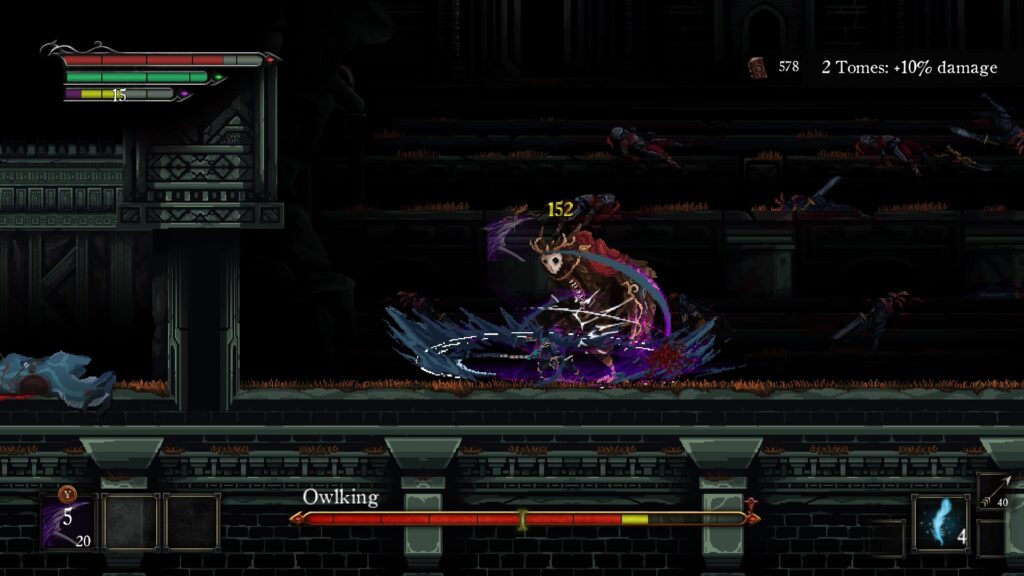
The original sounded a lot more rudimentary than what we got with Afterlife. Though there’s still the stamina gauge, it doesn’t pose much of an obstacle unlike before. Through this, the combat has become much more fast-paced where you swing your weapon and react to your enemy’s attacks due to being able to cancel from the recovery animation of attacks. Furthermore, you can now control the direction of your attacks, which eliminates the issue of going past and missing your enemies.
The most secure defensive option is the classic dodge roll that comes with short invulnerability. If you’re unsure about the timing you can trade Stamina for blocking the attacks with a shield. The better the shield the less stamina it’ll deplete.
The ultimate boon is the Perfect Block, time your block just in time with the incoming enemy attack, and you not only do not deplete any stamina but also can follow up with one of the strongest attacks in the game free of charge.
Putting everything together you get a Combat that goes from the classic slow paced Souls to something like a simplified Nioh. Sorun is nimbler than the classic Castlevania characters and Samus from Metroid at least, offering more depth since he has a lot to work with.
Standard Enemies
Different areas come with different enemies so there’s no shortage of variety. I didn’t experience any bad situations of being underleved. Standard mooks take about one combo and go down even faster when you use your special attacks.
Flying enemies have low HP as they should be. In some cases, I’d even say that it’s doing better than Castlevania: Curse of the Moon.
Boss Fights
They come in all shapes or forms with a good amount of humanoid sized, slightly bigger, and huge ones. They’ve got one thing in common. Their attacks hurt a lot but nothing that can withstand some good strategy against their patterns.
All of the bosses should be manageable for everyone because there’s nothing that keeps the player from grinding out stats in case of emergency.
Another notable thing is the fact that there are multiple phases so you can expect some additional challenges as you can bet on them becoming stronger. If there’s one thing to criticize it’s the fact that some bosses summon goons and others have animations that are too fast to react to like the Dark Knight.
There’s some fun to be had in finding out when to attack, dodge, use abilities and timing a Perfect Block. If you find a particular joy in challenging them, then you can put down the gauntlet again in the individual boss arena with their higher leveled counterparts that even offer rewards.
Gameplay Impression
Those two years developing are well spent as it manages to turn it into a Metroidvania game that comes with all bells and whistles that you know and love of the genre. The combat is quick and manageable and you can find some additional replayability with different builds.
The increase in map size is welcomed but the decision to put fast travel very late into the game is baffling because it completely drags down the pacing of the game. There are also some smaller things such as the stamina gauge that seems mostly superfluous because the recovery is very fast and there’s even a general talent that completely recovers your stamina for using an ability.
The Level Up system seems flexible at first but then you recognize there are stat limitations due to equipment in making your build. Maybe something foolproof would be better here, which is why Castlevania had a simple level-up system, and Castlevania: Circle of the Moon opted for unlockable fixed classes as NG+ bonuses instead.
Nevertheless, it has good gameplay and I’d argue it’s superior to the original version, leading to a bump in rating.
But if you’re interested in the original here’s a guide from the developer on how to access it via Steam.
Graphics and Sound
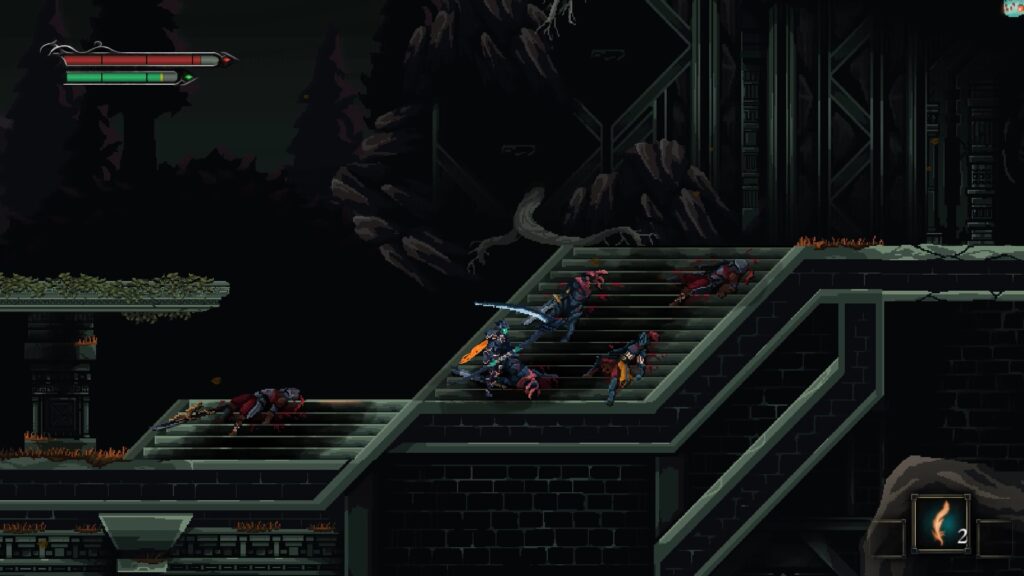
The visuals offer some fantastic sprite work and smooth animations. Coupled with very unique-looking areas that add to the atmosphere. Even the enemy designs are no slouch either though there are some obvious palette swaps clones.
The music tends to be on the melancholic side though it ramps it up when it needs to. Nothing stands out and works perfectly as BGM. A nice bonus is the additional voice work for side characters.
Verdict
Death’s Gambit: Afterlife successfully breathes new life into the game and boasts a lot of improvements and changes, making it a very good Metroidvania game. Though it comes with a few flaws that make it stay at the upper edge of the Save rating.
Fans of the Metroidvania genre are having a very good time right now with Death’s Gambit: Afterlife playing a part in it.

